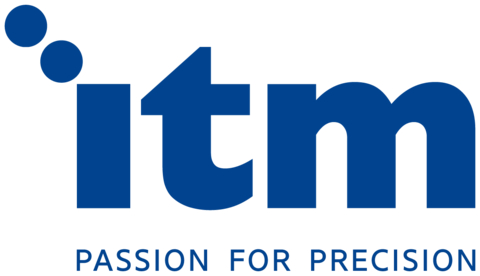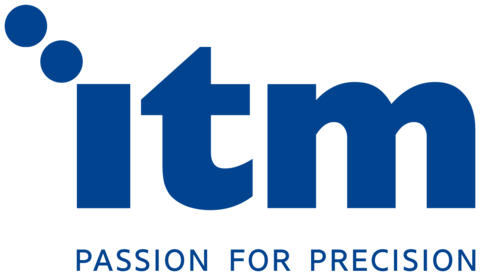GARCHING, Germany & MUNICH--(BUSINESS WIRE)--ITM Isotope Technologies Munich SE (ITM), a leading radiopharmaceutical biotech company, and Helmholtz Munich (Helmholtz Zentrum München), today announced a cooperation agreement for the clinical development of a radiopharmaceutical therapy candidate to treat malignant brain tumor glioblastoma. ITM and Helmholtz Munich will collaborate to support an upcoming dose-escalation Phase I clinical trial with LuCaFab (ITM-31). LuCaFab is a CA XII-specific antibody Fab fragment targeting molecule, developed by Helmholtz Munich, radiolabeled with ITM’s medical radioisotope no-carrier-added lutetium-177 (n.c.a. 177Lu, EndolucinBeta®). The planned multicenter investigator-initiated trial (IIT) will be led by the Westfälische Wilhelms-Universität Münster (University of Münster, Germany).
Under the terms of the agreement, which formalizes an ongoing collaboration between ITM and Helmholtz Munich, ITM supports the logistics and supply of the clinical trial material and provides funding for the trial, which is designed for the treatment of up to 15 patients. ITM holds the exclusive option, which may be executed at any time, to license the compound, related worldwide patents and know-how for the manufacturing, use and application of LuCaFab from Helmholtz Munich under already agreed upon terms. The option also allows ITM to access and use trial data for research and commercial activities.
Steffen Schuster, CEO of ITM comments: “We are pleased to continue our collaboration with Helmholtz Munich and to further advance ITM’s clinical pipeline. Glioblastoma is among the most malignant and most difficult to treat cancers. A precise radionuclide therapy targeting an antigen highly expressed in glioblastoma, such as CAXII, may inhibit tumor growth after surgical removal. We are dedicated to clinically explore this opportunity for these patients who have such a high unmet medical need.”
Reinhard Zeidler, Project Leader at Helmholtz Munich: “We believe that the combination of our tumor-specific targeting molecule and ITM’s medical radioisotope offers a new opportunity to improve the treatment of glioblastoma. After first encouraging studies with other radioisotopes in brain tumors, we expect ITM’s radioisotope lutetium-177 to have particularly favorable medicinal properties. Therefore, we look forward to initiating our collaborative clinical trial with the Departments of Neurosurgery and Nuclear Medicine at the University of Münster."
- End -
About Glioblastoma Multiforme
Glioblastoma is one of the most malignant types of primary brain tumors. It is a rare tumor, with about 3-5 new cases per 100,000 individuals per year.1 Even though surgery, chemotherapy, and radiotherapy have advanced over the last decade, resulting in a gradual improvement in the survival and quality of life of glioblastoma patients, the prognosis remains very poor.2 Glioblastoma is a complex tumor which is very difficult to treat. Surgery is rarely curative as the tumor cells infiltrate the surrounding tissue and the blood-brain barrier places a limitation on medical therapies. Even with macroscopic removal of the tumor and subsequent treatment with external beam radiation and chemotherapy, there is a risk that individual tumor cells will remain in the tissue and begin to grow again (relapse). More than 90% of tumor recurrences occur in the immediate vicinity of the primary tumor. Therefore, the treatment of the tissue surrounding the tumor is of great importance.
About LuCaFab (ITM-31)
Glioma cells can selectively express certain surface antigenic proteins such as carbonic anhydrase XII (CAXII), which are not found on healthy brain cells. Targeted molecules which specifically bind to the proteins can be produced to attack these antigens. This approach falls under the category of Targeted Radionuclide Therapy (TRT), an emerging class of cancer therapeutics, which seeks to deliver radiation directly to the tumor while minimizing radiation exposure to normal tissue. Targeted radiopharmaceuticals are created by linking a therapeutic radioisotope to a targeting molecule that can precisely recognize tumor cells and bind to tumor-specific entities such as receptors expressed on the cell surface. The radioisotope accumulates at the tumor site and decays, releasing a therapeutic amount of ionizing radiation, thereby destroying tumor tissue. Helmholtz Munich has developed a new antibody binding fragment (Fab) against the CAXII antigen, which has been optimized for the treatment of glioblastoma. ITM's no-carrier-added lutetium-177 (n.c.a. 177Lu, EndolucinBeta®) is coupled to the antibody in order to selectively target and irradiate tumor cells. The resulting compound, LuCaFab (ITM-31), is administered via intracavitary injection, meaning it is applied directly into the tumor cavity following the surgical removal of the tumor to attack residual cancerous cells that lead to recurrent disease. LuCaFab thus acts as a complementary, adjuvant therapy to the current standard of care approach to glioblastoma as it is designed to be applied after initial treatment to prevent future tumor growth.
About ITM Isotope Technologies Munich SE
ITM, a radiopharmaceutical biotech company, is dedicated to providing the most precise cancer radiotherapeutics and diagnostics to meet the needs of patients, clinicians and our partners through excellence in development, production and global supply. With patient benefit as the driving principle for all we do, ITM is advancing a broad pipeline, including two phase III studies, combining its high-quality radioisotopes with targeting molecules to develop precision oncology treatments. ITM is leveraging its leadership and nearly two decades of radiopharma expertise combined with its worldwide network to enable nuclear medicine to reach its full potential for helping patients live longer and better. For more information please visit: www.itm-radiopharma.com.
About Helmholtz Munich
Helmholtz Munich is a leading biomedical research center. Its mission is to discover breakthrough solutions for better health in a rapidly changing world. It is home to interdisciplinary research teams investigating the development of environmentally triggered diseases. With the power of artificial intelligence and bioengineering, the researchers accelerate the translation process to patients in the areas of therapy and prevention with a focus on diabetes, obesity, allergies and chronic lung diseases. Helmholtz Munich has more than 2,500 employees and is headquartered in Neuherberg, north of Munich. It is a member of the Helmholtz Association, the largest scientific organization in Germany with more than 43,000 employees and 18 research centers. Learn more about Helmholtz Munich (Helmholtz Zentrum München Deutsches Forschungszentrum für Gesundheit und Umwelt GmbH): www.helmholtz-munich.de
Ascenion, technology transfer partner of Helmholtz Munich, has been part of the project team that has been working on bringing this promising immunotherapy approach to the clinics.
1 GlobalData, 2018, Glioblastoma Multiforme (GBM): Opportunity Analysis and Forecasts to 2027
2 Gallego, 2015, Current Oncology 22(4): e273–e281 and Weller et al., 2013, Neuro-Oncology 15(1): 4–27





